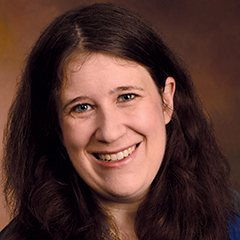
Of the many variables in medicine, one of the most difficult relates to time left for someone with a terminal illness.
Some physicians don’t like to give estimates since they are almost always wrong, and others don’t like to take away the idea of hope. Experts, including Atul Gawande, have written at length on the topic of what medicine can, and should, do and why hospice is important.
A July study from the Yale University School of Public Health sheds more light on the topic by looking at the best use of hospice by state, explaining the ideal is for people to spend five to eight weeks in hospice. Extremely short or very long stays imply hospice isn’t being used efficiently, the same as when people are disenrolled. All of this would be considered a “concerning pattern” for the purposes of this study. Keep in mind we are talking about averages: I’ve known people who went into hospice before a physician found a new treatment and they disenrolled; I’ve known people who were given bad advice about efficiency of a new treatment and went into hospice later than they should have.
Still, given the incorporation of hospice provisions in the Improving Medicare Post-Acute Care Transformation (IMPACT) Act of 2014, it’s worth examining the state-level variation in hospice use, as the researchers explain in their study in the Journal of Palliative Medicine. One previous study, in the Journal of Pain Symptom Management, had looked at data from 2002 and found the use of hospice varied from 8% to 49% across states. The Yale study investigated more than 660,000 decedents in fee-for-service Medicare during the last six months of life in 2011 and found 47% of them had been in hospice.
Given that I’m writing this on a plane to Oregon, I was interested to see the state is probably cumulatively doing the best job. It was in the highest quartile of hospice use and the lowest quartile of potentially concerning pattern of hospice use. The researchers’ guess is Oregon’s Death with Dignity Act has provoked conversations and evaluation of end-of-life options, better training for physicians and efforts to reduce barriers to hospice.
The researchers were investigating not only states’ patterns of hospice use, but demographic, clinical and market factor correlates. Arizona, Delaware, Florida and Rhode Island had reasonably high use of people using hospice but also had the highest proportion of hospice users with the concerning patterns. On the flip side, Alaska, North Dakota and Vermont had low hospice use but also a lower proportion of people with concerning patterns. As mentioned, Oregon was the only one with a high use of hospice that seems, for lack of a better term, correct.
Obviously, all states aren’t the same in terms of their population. Hospice use was at 20.2% in Alaska and 60.8% in Utah, which may reflect how nobody says, “Let’s retire to Juneau to live out our golden years.”
If you take out geography — we expect Florida and Arizona to have more hospice use because of its proportion of the elderly — your guess is as good as mine as to why it’s under 39% in Vermont and 56% in Rhode Island. Those in the District of Columbia and Connecticut tended to have many decedents with very short hospice enrollment, while those with very long enrollment was 16% in Delaware.
The rest of the details around who used hospice likely bear out what you see in a nursing home. Women, the elderly, those with higher income, those with more education, those in metro areas and those reporting themselves as white were more likely to use hospice. When people were in an area with more hospital beds and more home health agencies per 1,000 people aged 65 and up, they were less likely to use hospice.
It’s important to note the study is not drawing causal inferences. Researchers aren’t able to form theories around hospice characteristics and survival or the severity of disease among hospice patients. For those who are evaluating hospice use at a regional level for purpose of partnerships or referrals — and you should be looking at that data — you need to have some idea of both causes of death and patient preferences.
But the study ultimately begs the question of why we have so much variation between states that don’t seem to be that different. It’s truly a time where I feel comfortable writing: More research is needed.
Elizabeth Newman is Senior Editor at the new and improved McKnights.com. Follow her @TigerELN.




